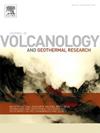Characterization and evolution of the basaltic magma reservoir beneath the Asal-Ghoubbet rift, Republic of Djibouti
IF 2.3
3区 地球科学
Q2 GEOSCIENCES, MULTIDISCIPLINARY
Journal of Volcanology and Geothermal Research
Pub Date : 2025-06-28
DOI:10.1016/j.jvolgeores.2025.108401
引用次数: 0
Abstract
The Asal-Ghoubbet rift is one of the emergent segments of the Aden Gulf oceanic ridge, which spreads westward on land into the triple junction zone of the Afar depression. The studied rift has been characterized by repeated magmatic and tectonic activity over its ∼1 Ma evolution, and during the latest volcano-tectonic episode in November 1978, a one-week-long basaltic fissure eruption led to the formation of the Ardoukôba volcano. This study investigates the evolution of the basaltic magma reservoir beneath the rift over an eruptive time span from ∼300 ka to the present. In total, eleven basaltic samples were collected and analyzed. We carried out petrography and major and minor element analyses for whole rock, microcrystalline groundmass, glass, and mineral phases. The lava compositions range from transitional to tholeiitic basalts and their chemical variability can largely be explained by fractional crystallization, along with concurrent mixing. The most common macrocryst phase is bytownite plagioclase, whereas olivine and clinopyroxene macrocrysts are found in lesser proportions. Mineral-melt equilibria suggest that olivine and clinopyroxene are dominantly phenocrystic in all formations, crystallizing from their respective carrier liquid. Most plagioclase macrocrysts are antecrysts and too primitive to have crystallized from their carrier liquid. Clinopyroxene-melt and melt-only barometric results indicate that magmas of the last ∼300 ka were extracted from a constant mid- to deep crustal zone at a depth between 7 and 18 km. In contrast, crystallization temperatures indicate progressive cooling and thus evolution of the degree of differentiation, which are interrupted by periodic replenishment of fresh primitive melts. Overall, similar magma storage conditions appear to have been maintained over time, which implies continuous renewal of the geothermal heat source in the Asal-Ghoubbet rift. These results are consistent with previous geophysical studies and thus can be used to update and strengthen our knowledge of the studied magma plumbing system.
吉布提Asal-Ghoubbet裂谷下玄武岩岩浆储层特征及演化
Asal-Ghoubbet裂谷是亚丁湾洋脊的新兴部分之一,在陆地上向西扩展,进入阿法尔坳陷的三重接合带。研究的裂谷在其约1 Ma的演化过程中具有反复的岩浆和构造活动的特征,在1978年11月的最新火山构造事件中,一次为期一周的玄武岩裂缝喷发导致了Ardoukôba火山的形成。本研究考察了裂谷下玄武岩岩浆库在喷发时间跨度从~ 300 ka到现在的演化过程。共收集和分析了11个玄武岩样品。我们对整个岩石、微晶地质体、玻璃和矿物相进行了岩石学和主要元素和次要元素分析。熔岩组成从过渡玄武岩到拉斑玄武岩不等,其化学变化在很大程度上可以用分离结晶和同步混合来解释。最常见的大晶相是斜长石,而橄榄石和斜辉石大晶的比例较小。矿物-熔体平衡表明橄榄石和斜辉石在所有地层中都是主要的斑晶,由它们各自的载体液体结晶。大多数斜长石大晶体是反晶体,太原始,不可能从它们的载体液体中结晶出来。斜辉石熔体和仅熔体的气压测量结果表明,最后~ 300 ka的岩浆是从7 ~ 18 km的恒定中深部地壳带中提取的。相反,结晶温度表明逐渐冷却和分化程度的演变,这一过程被新鲜原始熔体的周期性补充所打断。总的来说,类似的岩浆储存条件似乎一直保持着,这意味着Asal-Ghoubbet裂谷的地热热源不断更新。这些结果与以前的地球物理研究结果一致,因此可以用来更新和加强我们对所研究的岩浆管道系统的认识。
本文章由计算机程序翻译,如有差异,请以英文原文为准。
求助全文
约1分钟内获得全文
求助全文
来源期刊
CiteScore
5.90
自引率
13.80%
发文量
183
审稿时长
19.7 weeks
期刊介绍:
An international research journal with focus on volcanic and geothermal processes and their impact on the environment and society.
Submission of papers covering the following aspects of volcanology and geothermal research are encouraged:
(1) Geological aspects of volcanic systems: volcano stratigraphy, structure and tectonic influence; eruptive history; evolution of volcanic landforms; eruption style and progress; dispersal patterns of lava and ash; analysis of real-time eruption observations.
(2) Geochemical and petrological aspects of volcanic rocks: magma genesis and evolution; crystallization; volatile compositions, solubility, and degassing; volcanic petrography and textural analysis.
(3) Hydrology, geochemistry and measurement of volcanic and hydrothermal fluids: volcanic gas emissions; fumaroles and springs; crater lakes; hydrothermal mineralization.
(4) Geophysical aspects of volcanic systems: physical properties of volcanic rocks and magmas; heat flow studies; volcano seismology, geodesy and remote sensing.
(5) Computational modeling and experimental simulation of magmatic and hydrothermal processes: eruption dynamics; magma transport and storage; plume dynamics and ash dispersal; lava flow dynamics; hydrothermal fluid flow; thermodynamics of aqueous fluids and melts.
(6) Volcano hazard and risk research: hazard zonation methodology, development of forecasting tools; assessment techniques for vulnerability and impact.

 求助内容:
求助内容: 应助结果提醒方式:
应助结果提醒方式:


